Blog-News
Improvements in Processing Chicken Manure Based Fertilizer
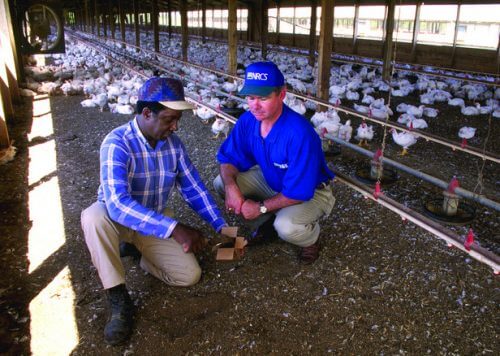 Chicken manure is a common ingredient in residential, commercial, and industrial fertilizer products due to its high nutrient content and widespread availability. In an unprocessed form, raw chicken manure can burn and damage plants, contains harmful pathogens to people and animals and is difficult to handle. Because using unprocessed manure as a fertilizer is not a viable commercial option, processes must be established to utilize heat to kill pathogens and then granulate manure into a useful, transportable, and sellable product. In granulated form, chicken manure based fertilizer offers several advantages over powdered based fertilizers such as decreased nutrient runoff, easier transportability and handling and more controlled spreading.
Chicken manure is a common ingredient in residential, commercial, and industrial fertilizer products due to its high nutrient content and widespread availability. In an unprocessed form, raw chicken manure can burn and damage plants, contains harmful pathogens to people and animals and is difficult to handle. Because using unprocessed manure as a fertilizer is not a viable commercial option, processes must be established to utilize heat to kill pathogens and then granulate manure into a useful, transportable, and sellable product. In granulated form, chicken manure based fertilizer offers several advantages over powdered based fertilizers such as decreased nutrient runoff, easier transportability and handling and more controlled spreading.
Manufacturing Cold Set Ceramics from Fly Ash
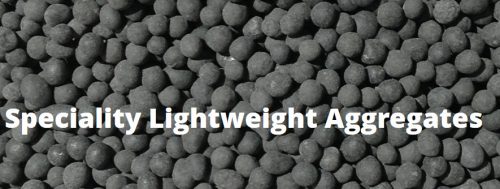 The environmental and economic benefits of using fly ash aggregates in concrete admixtures are well documented with adoption continually growing across industry[1]. The critical factor in managing this abundantly available waste from coal fired power plants is in converting it on-site at the lowest cost to both the materials processors and for sale to end users. The best way to cut processing costs is to lower capital equipment costs and increase efficiencies in production. Lancaster Products has successfully worked with Nometrain Pty. Ltd. from Queensland, Australia, to develop processes with a Lancaster High Shear Counter-Current Mixer to produce granulated Cold Set Ceramic products. This Cold Set Ceramic process uses a chemical reaction to cure the fly ash into a ceramic product which eliminates the need for kilns commonly used to fire fly ash agglomerates after they are pelletized in our high shear mixers. Nometrain has developed an environmentally safe, proprietary process that utilizes chemicals instead of water with the fly ash mix which “cures at ambient temperatures to produce a matrix with exceptional early green strength, and which cures over time[2].” This revolutionary process does away with the need for kiln firing eliminating an additional piece of expensive equipment and greatly reduces the energy costs typically associated with the firing of fly ash agglomerates. The partnership with Lancaster Products has allowed Nometrain the ability to utilize the Lancaster Mixer to create agglomerates of varying sizes at 90+% yields in an extremely short mix cycle.
The environmental and economic benefits of using fly ash aggregates in concrete admixtures are well documented with adoption continually growing across industry[1]. The critical factor in managing this abundantly available waste from coal fired power plants is in converting it on-site at the lowest cost to both the materials processors and for sale to end users. The best way to cut processing costs is to lower capital equipment costs and increase efficiencies in production. Lancaster Products has successfully worked with Nometrain Pty. Ltd. from Queensland, Australia, to develop processes with a Lancaster High Shear Counter-Current Mixer to produce granulated Cold Set Ceramic products. This Cold Set Ceramic process uses a chemical reaction to cure the fly ash into a ceramic product which eliminates the need for kilns commonly used to fire fly ash agglomerates after they are pelletized in our high shear mixers. Nometrain has developed an environmentally safe, proprietary process that utilizes chemicals instead of water with the fly ash mix which “cures at ambient temperatures to produce a matrix with exceptional early green strength, and which cures over time[2].” This revolutionary process does away with the need for kiln firing eliminating an additional piece of expensive equipment and greatly reduces the energy costs typically associated with the firing of fly ash agglomerates. The partnership with Lancaster Products has allowed Nometrain the ability to utilize the Lancaster Mixer to create agglomerates of varying sizes at 90+% yields in an extremely short mix cycle.
Blending of Dissimilar Powders to Achieve Homogenous Mixtures Using High Shear Mixers
 Many of the mix requirements presented to our engineers start with the need to blend powders of dissimilar properties into a homogeneous mix. It’s not uncommon for customers to discover that the equipment they currently use or are considering for use either does not produce the level of homogeneity specified or the process takes too long. We take great pride in seeing their faces light up when we show them the results that can be achieved using a Lancaster Products High Shear Counter-Current mixer!
Many of the mix requirements presented to our engineers start with the need to blend powders of dissimilar properties into a homogeneous mix. It’s not uncommon for customers to discover that the equipment they currently use or are considering for use either does not produce the level of homogeneity specified or the process takes too long. We take great pride in seeing their faces light up when we show them the results that can be achieved using a Lancaster Products High Shear Counter-Current mixer!
Vastly differing densities of powders can present unique problems when attempting to achieve a desired homogenous mixture. In particular, we have experienced this in the technical ceramics industry where the key ingredients often have dissimilar densities. The issue is further compounded in cases where the ratio of ingredients can be significantly unbalanced with 95% of the mixture containing ingredient “A” and the other 5% consisting of ingredients “B, C, D…”.
Using Section 179 Tax Deductions to Offset the Cost of Capital Equipment
There’s no better time than now to purchase the capital equipment you know you will need before the end of the year. By taking advantage of the Section 179 Deduction and Bonus Depreciation you will enjoy significant savings from your equipment purchases. This is a use-it-or-lose it write off that ends December 31, 2017, so get off the hump and place your orders now to ensure delivery before the end of the year.
Using High Shear Mixers to Manufacture Ceramic Proppants for Hydraulic Fracturing
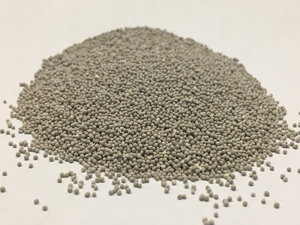 High shear mixers manufactured by Lancaster Products are currently in use within several different ceramic proppant manufacturing plants worldwide. Our mixers successfully meet the stringent specifications demanded by both the proppant manufacturers and end users at fracking operations across the globe.
High shear mixers manufactured by Lancaster Products are currently in use within several different ceramic proppant manufacturing plants worldwide. Our mixers successfully meet the stringent specifications demanded by both the proppant manufacturers and end users at fracking operations across the globe.
The hydraulic fracturing or “fracking” industry ebbs and flows in an indirectly proportional relationship the price of crude oil, but the reality is that it continues to be an important and growing industry. As with any highly competitive industry, the best way to maintain profitability is to improve efficiencies in both processes and equipment. One of the products consumed in high amounts are eco-friendly ceramic proppants which are introduced under high pressure into the fractured subsurface to “prop” open fractures and allow oil and gas to flow through the fractures. Enhancements in the characteristics of ceramic proppants significantly improve the efficiencies of fracking operations and therefore play a critical role in the profitability of the fracking industry.
Fertilizer Manufacturing Using High Intensity Mixers
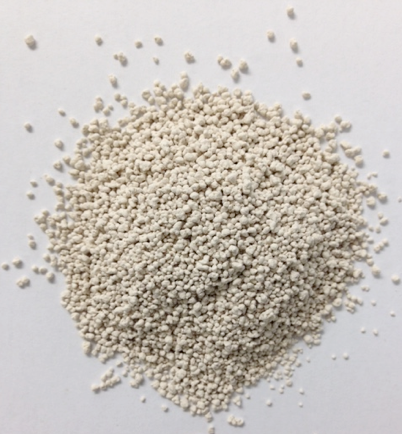 Over the years, we have worked with several fertilizer manufacturers in helping them meet their required specifications to produce safe and effective fertilizer for mass consumption. These requirements have ranged from mix-only processing of sulfur to a pelletized, shelf-ready end product made from organic ingredients. In all cases, our high shear mixers outperformed alternative solutions and/or improved efficiencies from existing processes.
Over the years, we have worked with several fertilizer manufacturers in helping them meet their required specifications to produce safe and effective fertilizer for mass consumption. These requirements have ranged from mix-only processing of sulfur to a pelletized, shelf-ready end product made from organic ingredients. In all cases, our high shear mixers outperformed alternative solutions and/or improved efficiencies from existing processes.
Fertilizer manufacturing is a process by which raw materials/nutrients, often in powder form, are mixed and agitated with a binder until pelletized for easier spreading with minimal dust dispersion. The pellets must be a homogeneous mix of nutrients to ensure maximum effectiveness without over/under saturation when applied. Furthermore, the size of the pellets will vary based on its intended application. For example, fertilizer for commercial agricultural fields will not necessarily be the same size as that used on golf course greens.
Unique Design Flexibilities of Counter-Current Rotating Pan Mixers
Counter-current rotating pan mixers incorporate a Rotor as the primary agitator in the mixing process (shown in the figure below). As discussed in a previous blog post (What is a Counter-Current High Shear Mixer?), global material transport within the pan (mixing vessel) is facilitated through the rotation of the pan itself, which also has the added benefit of producing more homogenous mixes with higher yields. Because the rotor is not needed for global material transport, it can be custom-configured in shape and speed as well as rotational direction to suit a variety of applications. It can change speed and direction at will if so needed. It also allows for fast liquid distribution without the use of atomizing nozzles.
What Is A Counter-Current High Shear Mixer?
Most technical books on mixing equipment rarely include information about Counter-Current High Shear Mixers. Yet, these mixers have been successfully satisfying industrial mixing needs for over half a century. So, how are they different from, and in many ways superior to, other mixer designs?
To best understand the benefits of a counter-current high shear mixer we’ll use the common home kitchen mixer for comparison, as both types of mixers share key components such as an agitator and a vessel where the mixing occurs. In kitchen mixers the agitator is mounted to a motor and the vessel remains locked in place and the rotational axis of the agitator may be fixed or move in an orbit. After mixing our ingredients for some time, we stop the agitator and scrape the bowl to get the unmixed materials near or adhering to the walls to where the agitator runs for better dispersion. We re-start the agitator to finish the mixing step before transferring the wet cake mix to a baking tray, again scraping with a spatula to make sure all the mix is transferred.

Beneficial Use of Fly Ash/Coal Ash in the Utility Industry
Costs to dispose of coal combustion products (CCP), including fly ash and boiler slag, continue to rise in the utility sector, but there are many financial and environmental benefits to converting this waste into marketable end-use products.
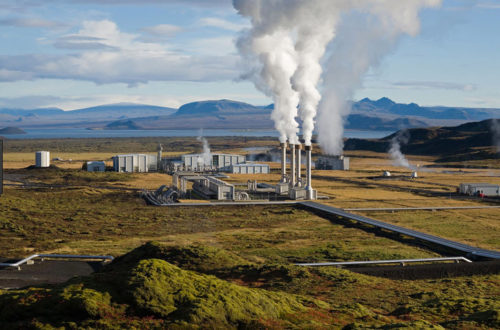 Enhanced EPA regulations imposed on power plants require various levels of on-site air pollution control to make air emissions cleaner. What comes out of the air, however, goes into the solid waste, which is costly to dispose of and contributes significantly to landfills. Several other facets must be factored into disposal costs such as transportation and regulatory requirements. It is for these reasons that a growing number of utility companies are turning this costly by-product into a source of revenue.
Enhanced EPA regulations imposed on power plants require various levels of on-site air pollution control to make air emissions cleaner. What comes out of the air, however, goes into the solid waste, which is costly to dispose of and contributes significantly to landfills. Several other facets must be factored into disposal costs such as transportation and regulatory requirements. It is for these reasons that a growing number of utility companies are turning this costly by-product into a source of revenue.
Fly ash and bottom ash can be used to produce road base materials, manufactured aggregates, flowable fills, structural fills, and embankments. Coal ash is also used to replace natural materials in the production of portland cement. Other applications for CCPs include wallboard manufacturing, roofing tiles and shingles. CCPs are also used for waste stabilization, snow and ice control, soil modification, as mineral fillers, in agriculture and mining and for very specialized uses. For example some CCPs have properties suitable for metal castings in the aerospace and automotive….
Particle Enlargement With Lancaster Products High Shear Mixers
There are many industrial applications that require the enlargement of powder or particles for improved handling. Some objectives may be: enhancing flow properties, recycling, de-dusting, densifying, freezing ingredient distribution, improving mold filling properties, etc. Most powders with the ability to fuse or slightly dissolve in the presence of a liquid can be granulated quite easily. Others may be coaxed to form granules by the introduction of a suitable binder such as water, acid, molasses, etc. The binders may act as a medium for the solid particles to adhere to each other, some may form a matrix to capture the particles, and others may involve chemical reactions to achieve the objective.

“Size-enlargement” is more commonly referred to as agglomerating, pelletizing, granulating and briquetting. What follows below is a top level comparison of particle enlargement through a snowballing mechanism (pan/disc) compared to shear action (high shear mixers), and does not address pelletizing with the application of high pressure or extrusion.


